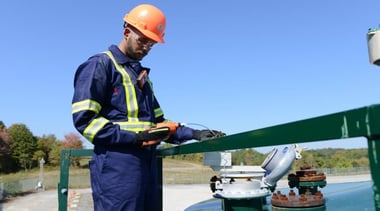As a safety professional, a large part of your job is eliminating hazards to create a healthy environment for workers. There are many overlaps between safety and environmental responsibilities when it comes to the workplace. Environmental safety, therefore, should play a role in your day-to-day activities.
A safer worksite results in a safer environment and vice-versa, so it’s crucial to understand how things like pollutants impact your workers and the world around you. However, keeping up with the latest regulations in both areas can become complicated very quickly.
A guide that explains what you need to know about environmental safety in industrial workplaces can help you balance both aspects of your job while applying improvements based on shifting standards.
Shahryar Khajehnajafi, Director of Research and Development Science at Industrial Scientific, has spent the last 30 years of his career working with environmental safety, particularly emergency response. Khajehnajafi developed many mathematical modeling and algorithms for our SAFER One Dynamic Plume Modeling software, a state-of-the-art emergency response tool.
He presents some of his recent research in a whitepaper titled Environmental Safety in Industrial Systems, which gives a bird’s eye view of US EPA environmental regulations and investigates areas where current technology can meet the regulations along with areas where we must develop or acquire technologies to meet the regulations.
The goal is to understand how industrial organizations can protect the health and safety of workers, surrounding communities, and the environment.
In this blog, you’ll get a snapshot of what you should know from the environmental regulations guide and learn why it matters for your team and community. Read on to learn more.
Common Regulation Challenges for Safety Professionals
The main challenge for busy safety leaders is understanding and staying up to date with the many safety laws and regulations. When standards are set by different organizations and shift over time, it can be challenging to understand what affects your worksite and how you can practically apply the rules to improve your site.
With this context, it’s key to understand the sensors and technologies that minimize or ideally, eliminate, the risk of injury or incident for your team. Another piece of the puzzle is making informed decisions about evacuations or shelters-in-place for your community if a chemical emergency does occur.
In the whitepaper, you can learn more about what to look for in your safety equipment.
Key Takeaways
So what are the must-know environmental concepts for safety leaders? Some key topics of concern expanded upon in the whitepaper include:
- urban area pollutants (also known as criteria pollutants)
- industrial pollutants
- greenhouse gases pollutants
- health effects of pollutants
- maximum acceptable concentration levels in the environment
- emissions sources to watch for
- monitoring requirements for pollutants
Once you understand the dangers, effects, and monitoring requirements for the pollutants your industry faces risks for, you can then create a plan and choose solutions that meet your environmental safety objectives.
Helpful guidelines that can help you improve safety on your site cover personal protective equipment, emergency response preparation, fenceline monitoring, and the various types of sensors available.
Protecting Your Workforce and Surrounding Communities
Although these pollutants are harmful and dangerous, you can monitor for and respond to them with the help of the right solutions to limit their effects. In the whitepaper, you can learn how your plant can leverage technology to detect, monitor, and respond to the presence of air pollutant. This includes sensor siting for an effective plant and community response and emergency response software.
To learn more about how you can keep your team and site up to regulations, download the whitepaper now: Environmental Safety in Industrial Systems.
Additional Resources
For those of you who want to explore more about this topic, check out some of the additional resources Khajehnajafi recommends:
For an overall view of Clean Air Act visit: https://www.ecfr.gov/current/title-40/chapter-I/subchapter-C
For refineries 40 CFR Part 63 visit: https://www.govinfo.gov/content/pkg/FR-2013-06-20/pdf/2013-14624.pdf



